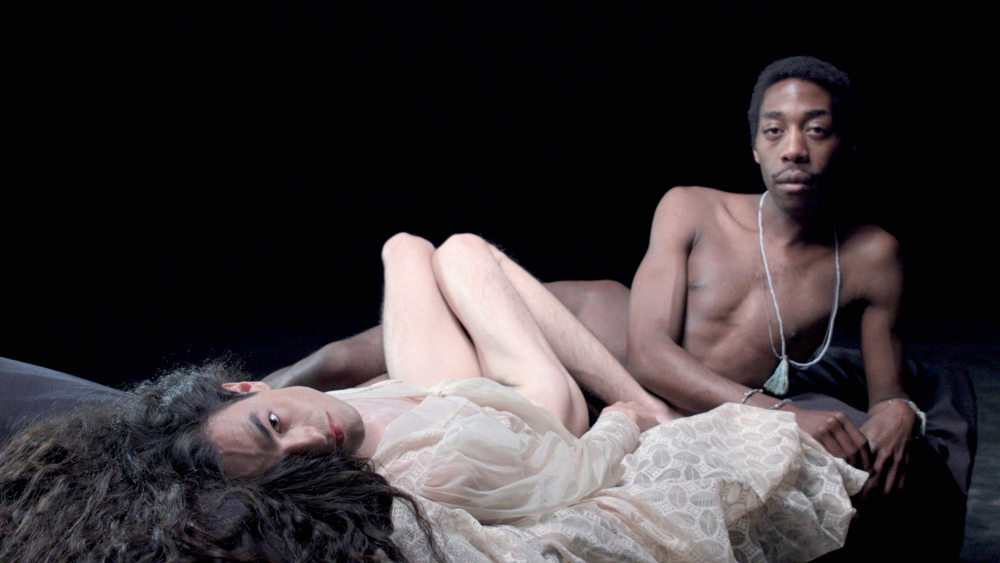Critic's Guide: Barcelona
Contributing editor Max Andrews selects the best shows in the city
Contributing editor Max Andrews selects the best shows in the city


Museu d’Art Contemporani de Barcelona (MACBA)
until 4 September
Organized by MACBA and MUAC (Museo Universitario Art Contemporáneo, Mexico City) ‘L’1%, c’est moi’ gathers more than 30 years of Andrea Fraser’s work reflecting on the practices and structures of the art world. Although her art is rooted in the sociological analyses of Pierre Bourdieu and the psychoanalytic approaches of Melanie Klein, this rewarding exhibition reveals its comedic intellect as much as its theoretical intent. Inaugural Speech (1997) for example, is a video that documents a Fraser performance given at the opening of the 1997 edition of inSITE, the public art initiative focusing on the San Diego–Tijuana border, in which she hilariously lampoons the roles of artist, curator, and patron, satirizing the different stakeholders’ broader cultural-political agendas and their self-congratulation.

Núria Güell, ‘Good Intentions’
ADN Galeria
until 9 September
Often traced through annotated legal documents, testimonial photography and video, Núria Güell’s projects have frequently attempted to subvert the ethical righteousness of nation states’ immigration and employment legislation. One of the six projects from the last two years that comprise ‘Good Intentions’, Stateless by Choice (2015–ongoing) reflects the Catalan artist’s continuing bid to officially divest herself of Spanish nationality in solidarity with stateless migrants. Commissioned, and ultimately cancelled, by an unnamed art centre, Support Swedish Culture (2014) saw four Roma people who had previously made an income begging officially contracted as street fundraisers – and thereby gain the attendant rights to social services – to collect donations supposedly destined to support Swedish arts initiatives. A benevolent antidote to Santiago Sierra’s bleak remuneration works, perhaps? Yet the new project which lends its title to the show, Good Intentions (2016) casts Güell’s apparent humanitarianism in a more Swiftian light. Developed with regular collaborator Levi Orta, it is ostensibly a proposal, replete with donation boxes in the gallery, to save looted Syrian antiquities by purchasing them from the black market.

Carles Congost, ‘Wonders’
Arts Santa Mònica
until 17 July
Carles Congost’s video Wonders (2016) premiered during LOOP, and is the result of the second edition of the art-fair-cum-festival’s production prize, awarded in association with la Xarxa de Centres d’Arts Visuals de Catalunya (Network of Visual Arts Centres of Catalunya). The film is a tender study of prodigious success and its capricious aftermath, although the awkward allocation of Arts Santa Mònica’s former bar space for its projection does Congost no favours. Two middle-aged men humbly recite a sonnet-like text composed by the essayist Eloy Fernández Porta and reminisce about their past lives as the child stars of the Birmingham reggae sensation Musical Youth. Dennis Seaton and Michael Grant were catapulted into fame in 1983 by their infectious hit ‘Pass the Dutchie’, yet the band were soon forgotten and they were left to start their lives again in adolescent anonymity. Congost is also participating in the current Manifesta 11 in Zürich this summer with a mock documentary made with member of the Zurich Fire Department.

‘Long Live The Old Flesh’
Nogueras Blanchard
until 29 July
Curated by the artist Carlos Fernández-Pello, ‘Long Live The Old Flesh’ gathers works by seven artists to address the notion of ‘textual prosthetics’ and the fleshy word in a digital age. The exhibition is underpinned by four of Joseph Grigely’s characteristic works from the 1990s (including Untitled Conversations (Mumblebook), 1998) – scribbled notes indicating conversations with the artist, who is deaf. Andrea Gómez’s EMAIL (2016) – ‘EMAIL’ engraved on a marble slab – is a feeble idea literally set in stone, and that may be its silly point. Yet other works sit more convincingly with Fernández-Pello’s sincere allusions to semiotics and ‘intangible materialism’, notably Nicoline van Harskamp’s Her Production (2014), one of three videos in the show. Following the Dutch artist’s research into English as spoken by non-native speakers, it consists of subtitles written in phonetic symbols that accompany audio critiques of her pronunciation.
Harun Farocki ‘Empathy’
Fundació Antoni Tàpies
until 16 October
‘Empathy’ does not attempt to survey the prolific work of the acclaimed filmmaker Harun Farocki, who died in 2014, and which encompasses television, cinema and multiscreen gallery installations. Instead curators Antje Ehmann and Carles Guerra converge on a group of key works dealing with labour practices and the representation of the worker. One highlight is The Silver and the Cross (2010), a video essay that examines a 1758 oil painting by Gaspar Miguel de Berrios to reflect on the exploitation of indigenous labour by the Spanish Empire in the mines of Potosí, Bolivia. Farocki’s last major production before he died, realized together with Ehmann, is presented in Spain for the first time. Eine Einstellung zur Arbeit (Labour in a Single Shot, 2011–14) includes 54 films from nine cities around the world drawing on the method and subject of one of the earliest films, Louis Lumière’s Workers Leaving the Lumière Factory (1895).

Equipo Palomar ‘No es homosexual simplemente el homófilo sino el cegado por el falo perdido’
Sala Gran, La Capella
until 4 September
Formed by artists MarioKissme and R. Marcos Mota, Equipo Palomar is devoted to queer politics and hidden histories. ‘No es homosexual simplemente el homófilo sino el cegado por el falo perdido’ (The homophile is not just homosexual, but the man blinded by the lost phallus) takes it title from a previously unknown 1976 draft for a short film that the duo discovered in the archives of the prolific writer, anthropologist and LGBT activist Alberto Cardín, who died of AIDS-related illness in Barcelona in 1992. The centrepiece of the exhibition is Equipo Palomar’s exuberant production of Cardín’s loose screenplay – an erratic and erotic exploration of narcissism, blasphemy, miscegenation, transvestism, and the murder of Pier Paolo Pasolini. Besides its act of homage in the realization of the film, through accompanying documentation of Cardín writings Equipo Palomar seeks to resuscitate his sheer unorthodoxy as a guide for navigating Spain’s transitional political present.























